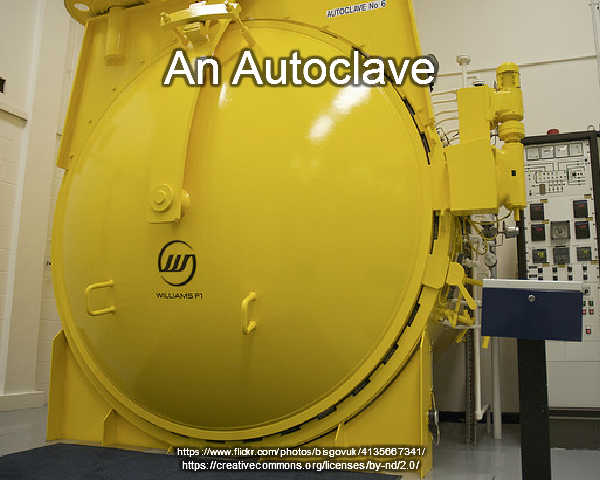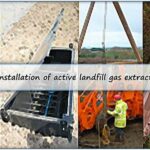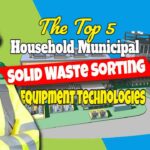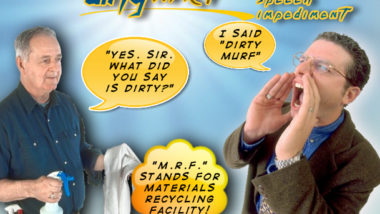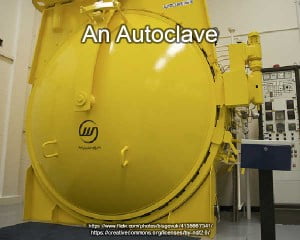 Municipal Solid Waste Autoclaving is one of the waste treatment process that is being used to pre-treat waste, and it is often applied to the residual waste after all recycling has been done. Howqever, it can also be used before recycling, and when this is done it helps by reducing volumes, shrinking all plastic film, and making the waste easier to separate in a recycling facility.
Municipal Solid Waste Autoclaving is one of the waste treatment process that is being used to pre-treat waste, and it is often applied to the residual waste after all recycling has been done. Howqever, it can also be used before recycling, and when this is done it helps by reducing volumes, shrinking all plastic film, and making the waste easier to separate in a recycling facility.
Autoclaving uses a combination of heat, steam and pressure, for general residual waste it is used along with the mechanical action of rotation . Ultimately, the aim of waste autoclave process is to reduce the impacts residual waste has on the environment when sent to landfill.
The EU Landfill Directive demands that before waste can be sent to landfill it must be pre-treated. Firstly, this is to reduce the environmental impact of the waste that does get sent to landfill, and secondly, to further increase the amounts of materials recycled.
Autoclave Processing of Municipal Solid Waste MSW
Steam autoclaves are steel horizontal tube-type devices, designed to work safely at high temperatures and pressures.
In addition to the more recent uses of autoclaving which we have just described, autoclaving has long been used on a varity of smaller scales for all sorts of sterilization duties. Medical waste is one such type of waste. This waste must be treated and managed quickly in order to ensure public safety and to remain in compliance with applicable regulations and laws. As a result every day untreated medical waste leaves a facility there is a significant liability risk to the generator.
When waste is not burned, the toxic substances associated with incineration are not produced. Less money then needs to be spent on pollution controls and the adverse health affects for surrounding communities are minimised.
The EC Landfill Directive is seen as providing the principal legal framework influencing municipal solid waste (MSW) management and strategy development in the UK. The most significant part of the Directive proposes a strict timetable for reductions in landfilling of biodegradable municipal waste (BMW).
The amount of investment in waste technologies like autoclaving will be substantial if the UK’s adherence to this timetable is going to be achieved. The EA continues to remind businesses and industry of the changes in landfilling waste that have now come into force . In a press release Liz Parkes, Head of Waste at the Environment Agency, commented:
‘The changes to the rules mean waste must be treated before it is landfilled, and all liquid wastes will be banned from landfills. These changes, which are being introduced under the Landfill Directive, aim to help reduce our dependency on landfill, as well as improve the environmental standards for the wastes that continue to be landfilled’.
A waste autoclave is one of the things owned by a wide variety of businesses to make sure they can sanitize all sorts of materials. A standard industrial autoclave uses steam, heat and pressure to sterilize equipment. A waste autoclave can be used to treat solid wastes and biohazards including medical wastes.
The waste autoclave process is essentially a steam autoclave process being that maintains pressure in a steel bar gauge for at least 45 minutes. This allows the process to fully cook the waste or sterilize it so it is ready to be recycled in some format, or sent to landfill. This process allows for a high virus kill rate for the bacteria and viruses that may be in the content, but when used for general waste the bbenefit sought is more to do with volume reduction and minimizing waste tonnages sent to landfill.
Sterecycle is company which is active in the municipal waste technology sector and plans to build and operate new recycling plants around the UK based on its proprietary steam autoclaving technology. Sterecycle’s first autoclave waste recycling plant was built in Rotherham, Yorkshire. At the time is was claimed to be the world’s first commercial-scale facility that applied steam to separate and recycle unsorted household waste. This pioneering plant was built on the site of a former British Steel works.
A Review of the Ebook “An Introduction to Landfill Gas Extraction Systems”
Welcome to this review for the ebook “An Introduction to Landfill Gas Extraction Systems”. This ebook is a comprehensive guide for anyone involved in landfill gas extraction design, installation, operation, and maintenance, as well as landfill gas energy from waste (EfW) projects. About the Author The author, Steve Last, provides over 50 pages of essential […]
5 Top Household Municipal Solid Waste Sorting Equipment Technologies
It is important that our readers know about the 6 top household Municipal Solid Waste sorting equipment technologies as more and more waste is diverted away from landfills for recycling, and a more sustainable circular economy grows. That's because the proper management of household municipal solid waste (MSW) is crucial for both environmental and public […]
How a Food Waste Separator Makes Disposing of Leftovers Easier
A food waste separator makes it easy to dispose of leftovers and scraps of food. This machine is usually equipped with an auger that pushes the waste into the separator unit itself. Various shaped paddles and rods in the separator press the food waste through screens. The separated material drops out as a slurry, with […]
Reuse Old Materials by Applying These Furniture Recycling Ideas
When the time comes to replace your kitchen, why not reuse (repurpose) old materials by applying these furniture recycling ideas/ tips? It's tempting to just throw the existing cabinets away and start from scratch. That's not only unnecessary, it's wasteful. That's because the majority of kitchen cabinet materials are non-recyclable. This creates a significant problem […]
